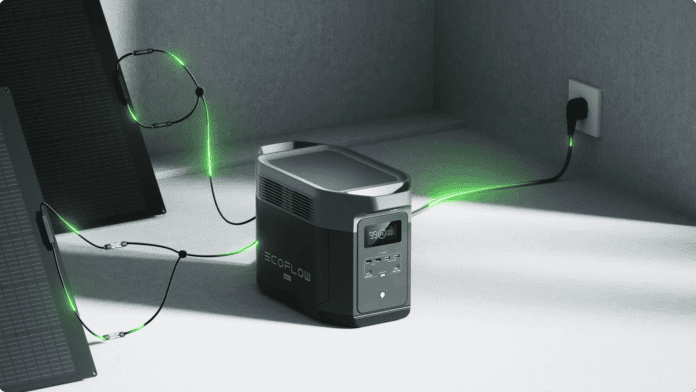Table of Contents
The age of dead batteries getting tossed in the trash is behind us, and the time for rechargeable batteries has come. Reusable batteries are convenient and affordable, saving you trips to the store and keeping money in your wallet, all while limiting the environmental impact of disposable batteries piling up in landfills.
But with so many different types of rechargeable battery technology on the market, finding the right kind for your needs can be tricky. To demystify the issue, here’s everything you need to know.
What Are the Different Types of Rechargeable Batteries?
While many different types of rechargeable batteries exist, some varieties are more common than others. Here are some of the top contenders.
Lead-Acid
Lead-acid batteries are the oldest type of rechargeable battery. Powerful, durable, and inexpensive, they can last for up to five years and are commonly used in electric wheelchairs and golf carts.
However, the lead in this variety of batteries makes them dangerous, especially if they are not disposed of correctly.
Nickel-Cadmium
Nickel-cadmium (NiCd) batteries are commonly found in digital cameras, portable power tools, and other high-drain devices. While they supply a high level of electricity, they have a fairly low capacity and need to be recharged frequently. However, like lead, cadmium is also toxic.
While they can last for over 15 years, you’ll need to be extremely cautious when the time finally comes for disposal.
Nickel-Metal Hydride
Another common battery type for high-drain devices is the nickel-metal hydride (NiMH) battery, which improves the NiCd battery in a few ways. While they have a shorter overall lifespan, lasting only about 1000 charges, they have a much larger capacity and don’t contain any highly toxic metals.
Opt for the low self-discharge (LSD) version if you can cope with a slightly lower capacity, as NiMH batteries can lose power quickly when not in use.
Lithium-Ion
Lithium-ion (Li-ion) batteries, commonly used in smartphones, are the most common type of battery in rechargeable devices today. They’re ultra-light, pack a powerful punch, and hold a charge for longer than any of their rivals.
While Lithium-ion is considered among the best options for rechargeable batteries, more advanced subtypes offer high energy density and a long life span. Consider the Lithium-Ferrous Phosphate (LFP) battery.
Commonly used in solar technology–like EcoFlow’s Portable Power Stations and even featured in EcoFlow’s Dual Fuel Smart Generator–LFPs are free from metals that are commonly sourced unethically, like nickel and cobalt, making them a high-quality, low-harm choice for consumers.
4 Things To Consider When Choosing the Best Rechargeable Batteries
Knowledge is power when choosing a reusable battery. Now that you better understand the different types of batteries used in solar technology, here are some of the essential questions when picking your perfect match.
How Much Power Do You Need?
Different batteries pack different punches, and it’s important to consider how much juice you need. Nickel-cadmium and Nickel-metal hydride batteries supply a high level of electricity and may be a good option.
How Frequently Can You Charge Your Device?
Not all batteries have the same capacity. If you can charge your device frequently, you have more flexibility in your choice. If you can’t charge your device as often, opting for a battery that holds a charge for a longer time– like the Lithium-ion battery– is a safe bet.
What is the Lifespan of the Battery?
Each battery type on this list ranges in lifespan from 3 to 15+ years. That’s a significant margin of difference. Consider how much you are investing in a battery in conjunction with its lifespan to ensure you’re making a financially sound choice.
If the battery is less expensive, replacing it every 3 to 5 years may be a worthwhile trade-off for some of the other beneficial features.
Will the Device Sit Idle For Long Periods of Time?
Options like Nickel-cadmium and Nickel-metal hydride batteries lose power when sitting idle for too long. When choosing the correct battery for your needs, consider how frequently you’ll use the device and opt for a low self-discharge option if available.
Frequently Asked Questions
While capable of the same high-energy outputs, a Li-ion battery is up to 35% lighter in weight than a NiMH battery, has a longer life cycle, and doesn’t lose as much charge when not in use. However, a Li-ion battery is more expensive and can’t operate at the low temperatures that a NiMH battery can handle.
The lifespan of a rechargeable battery depends entirely on what type of battery you choose. Li-ion batteries tend to have a shorter lifespan than other varieties, such as Nickel-cadmium batteries. The overall lifespan of rechargeable batteries ranges from 3 years to over 15 years. You can extend the lifespan of your battery with proper care and charging techniques.
Final Thoughts
While rechargeable batteries offer many advantages over disposable batteries, not all technology is the same calibre. Thankfully, when it comes to finding top-of-the-line solar battery technology, EcoFlow has you covered.
In addition to their impressive line of portable power stations and solar panels, EcoFlow also offers a range of high-impact accessory products, like the EcoFlow Smart Home Panel and the EcoFlow PowerStream Microinverter, that maximise the efficacy and usefulness of solar power technology for people like you. Check out the EcoFlow product line-up today.
